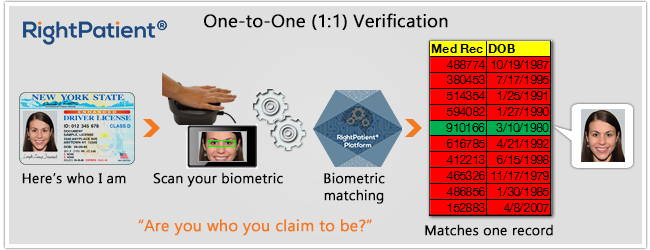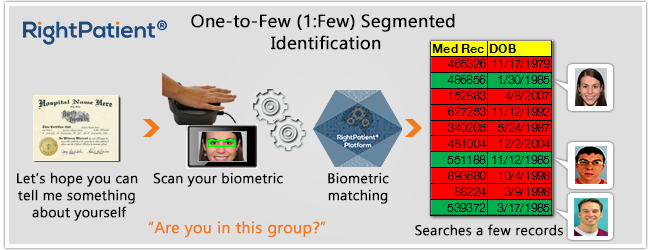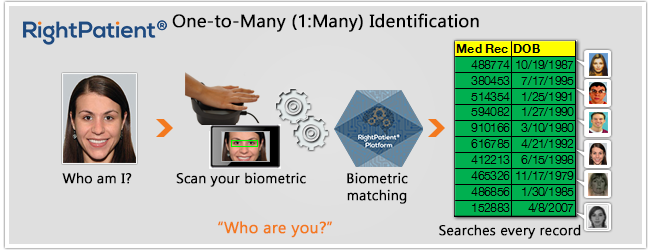Biometric Matching Types
The ONLY way to prevent duplicate medical records and improve patient data integrity with biometrics is to implement a system that, during patient enrollment, compares a captured template against ALL stored templates in the biometric database. This is known as a “one-to-many” (1:N) comparison. It’s also the only way to ensure high levels of data integrity across the HIE or IDN.
Understanding the differences in biometric matching is vital if you expect the system to prevent duplicate medical records and improve medical record data integrity.





